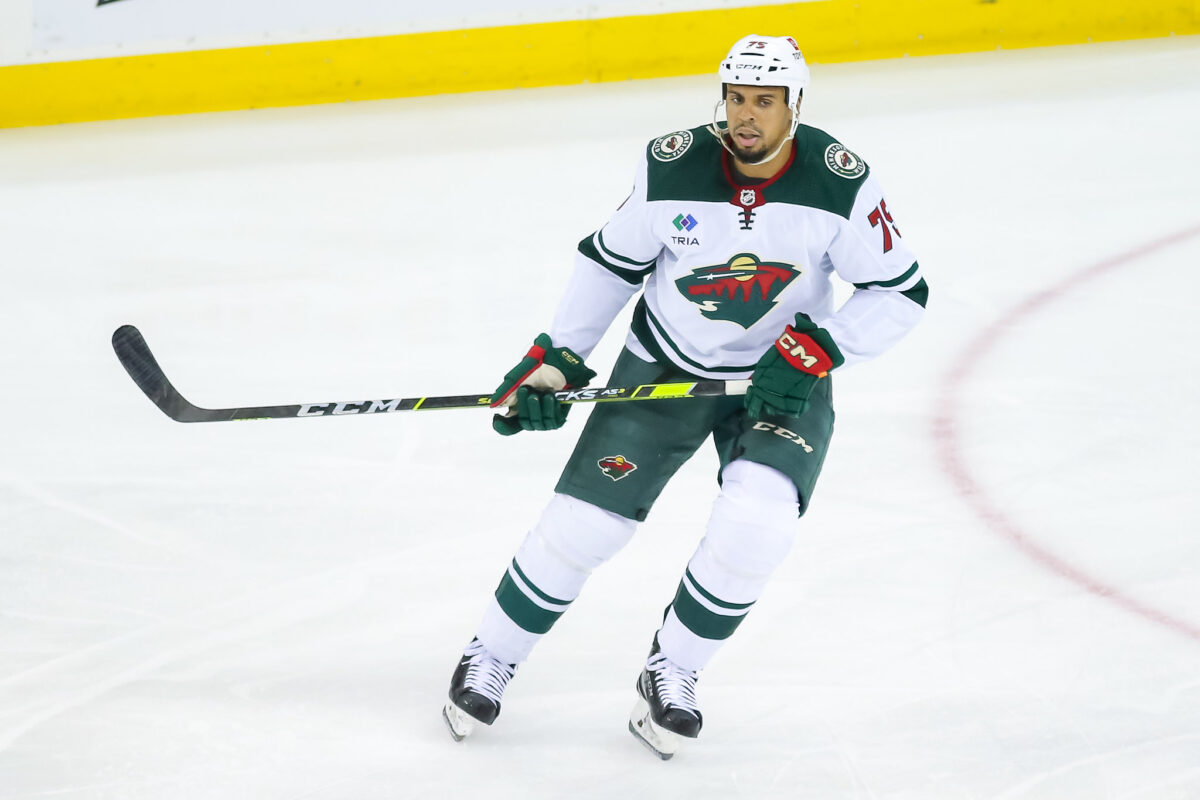The Toronto Maple Leafs have been Stanley Cup favourites yearly for the past six seasons. Yet they are put out of the playoffs early every year and must figure out what went wrong. Arguments are made that the team needs more grit and more demanding players to get through the hard-nosed style of playoff hockey, and every season that’s what their general manager (GM) does. He tries to acquire grittier playoff-type performers. The issue is they are bottom-six-type players who will only play a handful of minutes at best since they can’t afford to sign a top-six grit player due to cap issues.
This season, new Maple Leafs GM Brad Treliving is going in a different direction; he is signing players that bring a distinct personality to the dressing room, not just grittier performance on the ice. Time will tell if this is the answer, but it also opens up another question: what is the issue with the team’s culture, and why does it need to change?
Reaves Signing Is for More Than Just Toughness
When the Maple Leafs signed Ryan Reaves to a three-year deal, many thought Treliving was losing his mind. After all, Reaves is 37 years old and doesn’t produce much on the ice except for throwing punches and intimidating his opponents. He’s played in the NHL for 13 seasons with five different teams, his best season being in 2018-19 with the Vegas Golden Knights, where he scored nine goals and 20 points in 80 games.
Reaves does bring the grit factor to the Maple Leafs as an intimidating player and one of the last heavyweight fighters in the NHL. He also throws a lot of hits, 2797 in 828 games, which averages to around three hits per game. That’s not bad for a guy who only plays just under nine minutes a game. The Leafs had a similar player in Wayne Simmonds, and they ended up sitting him for most games, so why sign Reaves when they could have just re-signed Simmonds for probably less?

Reaves was signed not for what he does on the ice but for what he brings into the dressing room. As Treliving said in his news conference about the signing, “You need a character on your team, and sometimes you need some characters. It’s not about fighting and all the rest of it. I felt on the ice, in our room, and around our team we needed a little bit more noise, and Ryan brings that.”
This quote also raises questions like, “What does he mean by more noise?” Head coach Sheldon Keefe once said after a 6-3 loss to the New York Rangers that they “played soft and purposeless” — a game where Reaves scored two goals against the Leafs. Maybe Toronto players are a bit soft, but the team did address that last year. The more significant issue could be the mood in the dressing room. John Tavares is the captain but is known to be a quiet leader. Maybe Reaves will be more of a voice to motivate the room, and that’s what Treliving feels is missing to move forward in the playoffs.
O’Reilly and Schenn Didn’t Stay Long
At last year’s trade deadline, the Maple Leafs traded for Ryan O’Reilly and Luke Scheen to help bolster their forward and defensive groups. Both players are the type that performs well in a playoff-style hockey game, with O’Reilly already winning a Cup with the St.Louis Blues. Schenn is a big-bodied heavy defenceman who can handle the hard work of a long playoff run. After arriving in Toronto, they both expressed how much they loved to be there and couldn’t wait to help the Maple Leafs win a Cup. They didn’t win the Cup, but they did allow the Leafs to get past the first round of the playoff for the first time in 18 years, and there was interest from the club in bringing both back.
Related: Domi, Bertuzzi & Reaves: Maple Leafs New Snot Line
Free agency started on July 1, but O’Reilly and Schenn both quickly signed with the Nashville Predators. This seemed odd, considering they were both eager to play for the Maple Leafs and knew the team was interested in returning them. We can speculate they were unhappy in Toronto with an issue with the dressing room, which some on social media have already done. We can also be logical and think the Maple Leafs didn’t want to sign either player to the money or term they were asking for.
O’Reilly received a three-year, $4.6 million agreement, and Schenn three years at $2.5 million. The Leafs decided to sign Tyler Bertuzzi to a one-year, $5.5 million deal and Max Domi for one year at $3 million. If there was interest, they could’ve given O’Reilly the same deal as Nashville — if you believe some rumours that the same offer from Torornto was there. This may not be the red herring some people think it is, but it does leave you wondering why two players who wanted so badly to be on the team at first so quickly signed elsewhere.
Maple Leafs Locker Room Issues Could Be Nothing
When the GM says they want to change the team’s character, it doesn’t mean they think there is an issue with the players on the roster. It could simply mean what we have done in the past isn’t working, so let’s try something new, which could be exactly what’s going on now. The acquisitions of Bertuzzi and Domi could mean they want guys who are willing to go to the front of the net and get the garbage goals. Toronto hasn’t done much of that in the past; they haven’t needed to, but why not add another weapon to the arsenal? Bertuzzi also gives them grit in the top-six, something the Leafs haven’t had; Michael Bunting tried but became more of a distraction than a help.

Many can speculate that there is something more to this character change than meets the eye and genuinely believe it’s in the dressing room. After all, Reaves was brought in to help change the noise in the room, and Domi and Bertuzzi are hard-nosed guys who are known to be active in the locker room. Where there is smoke, there is fire, so the room may have some divide or even some cliques that tend to separate players instead of bonding them.
Whatever the case, the management team wants a change in the team’s dynamic off the ice, and this team hasn’t been doing it on the ice in the playoffs, even with all their talent. Time will tell if this is the key that unlocks a playoff run, but when all your other options fail, you start looking elsewhere to see what can make this year a success.
